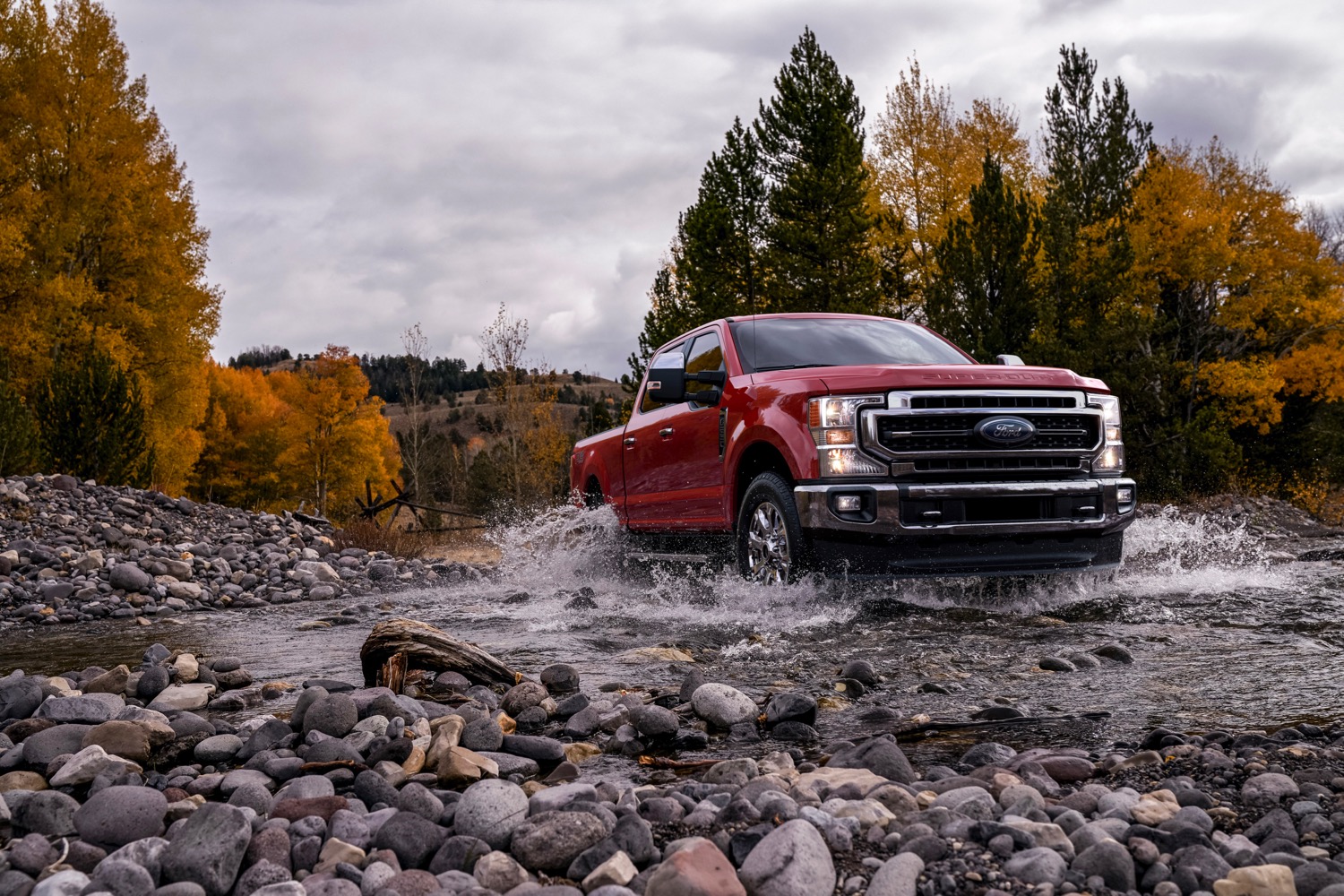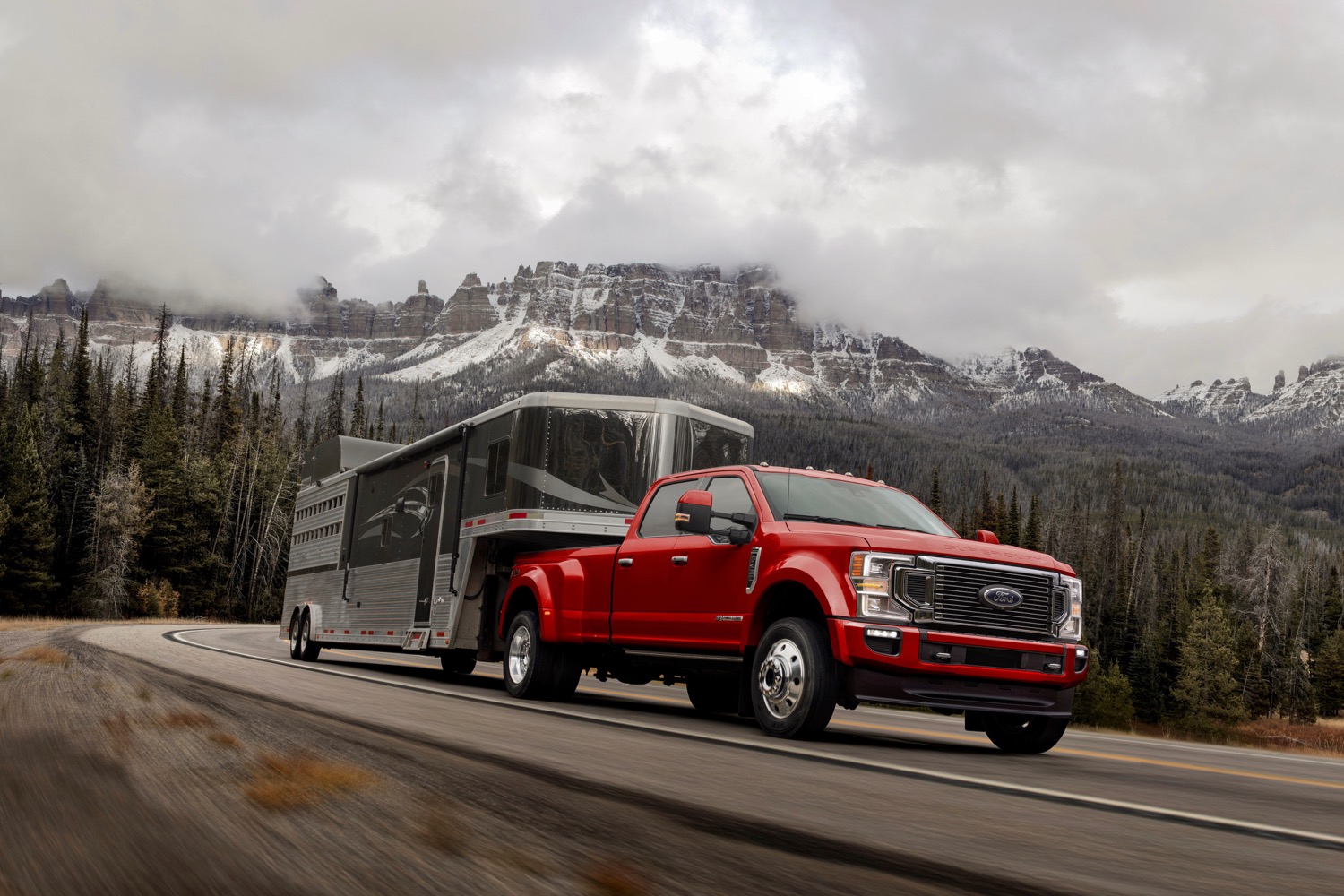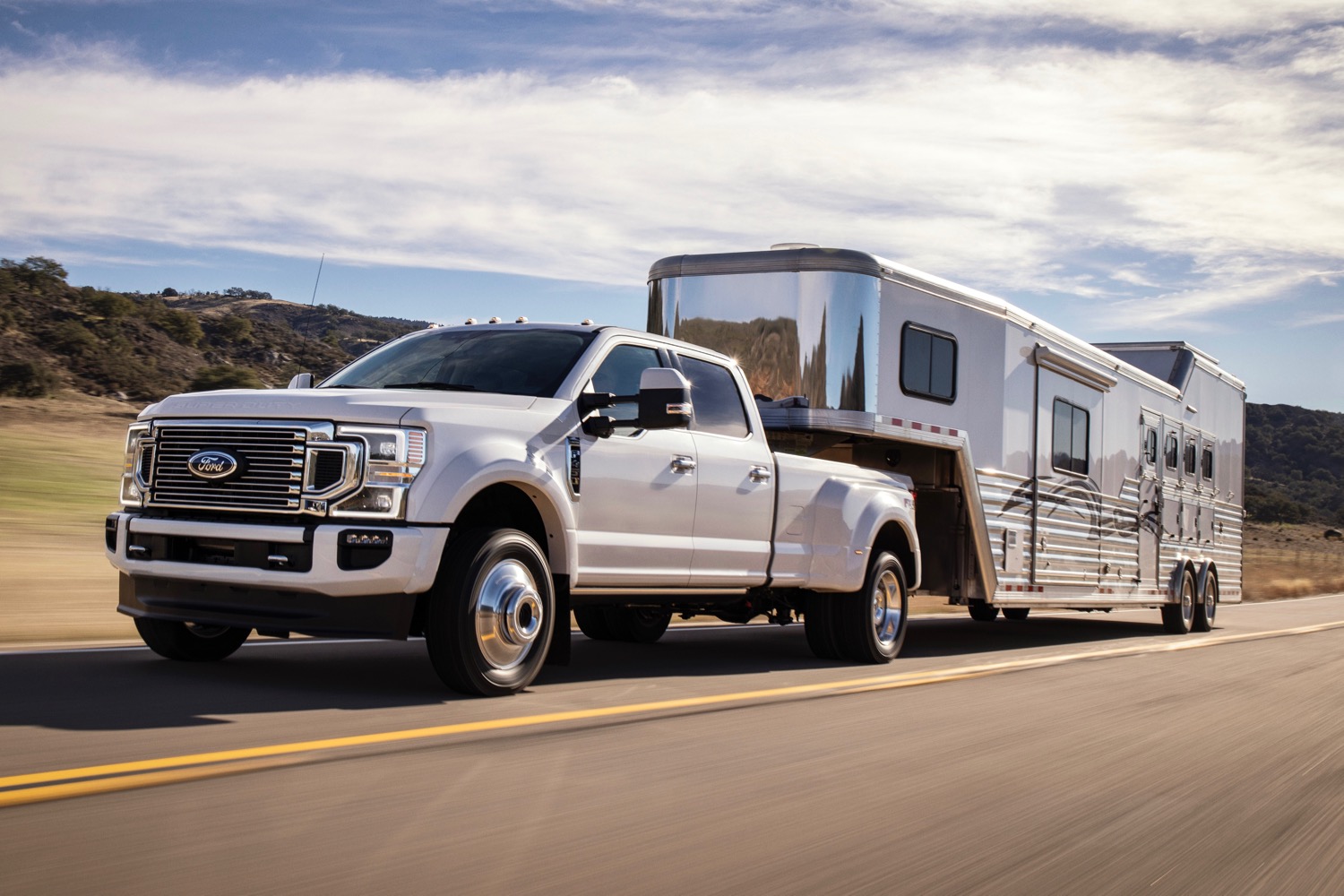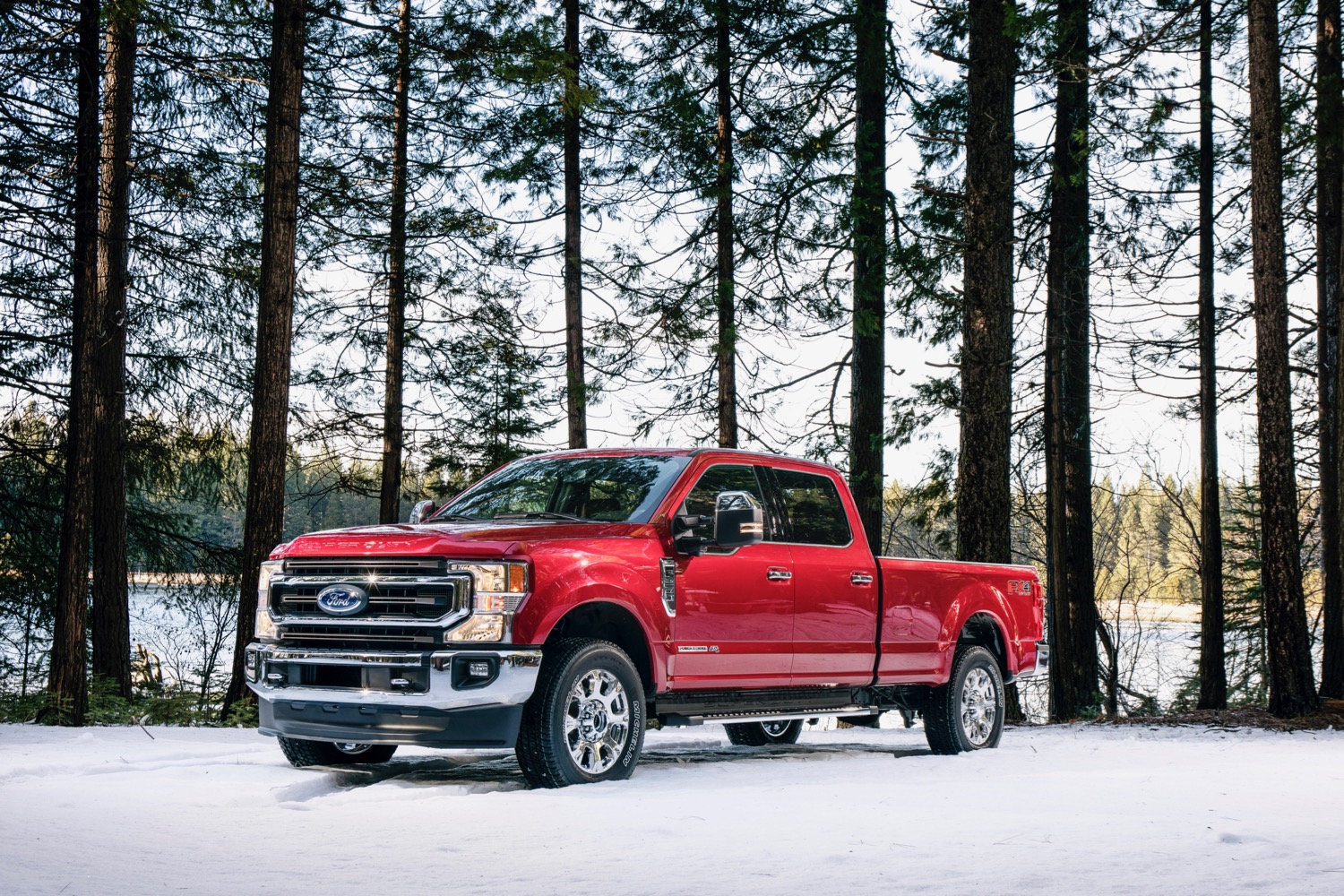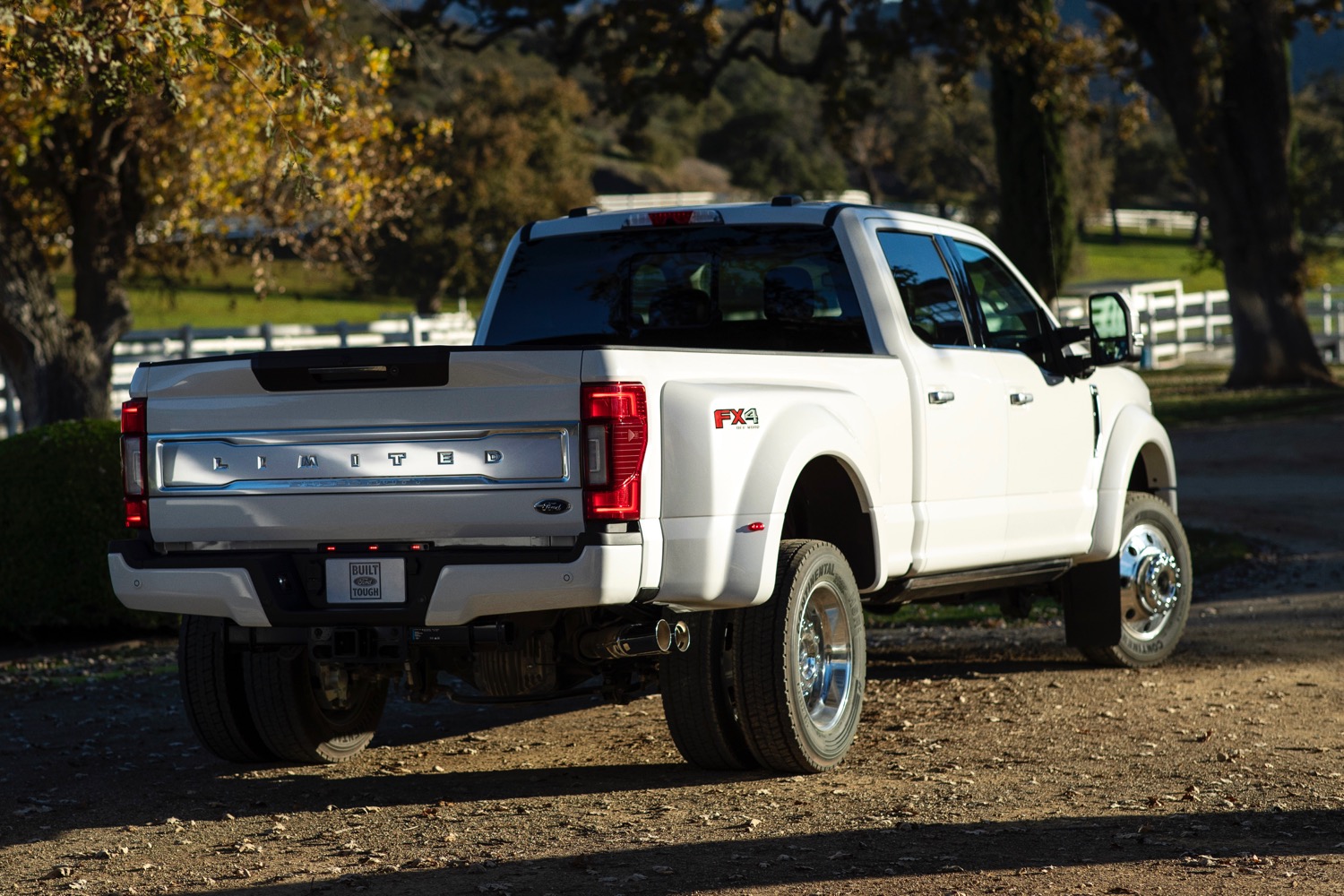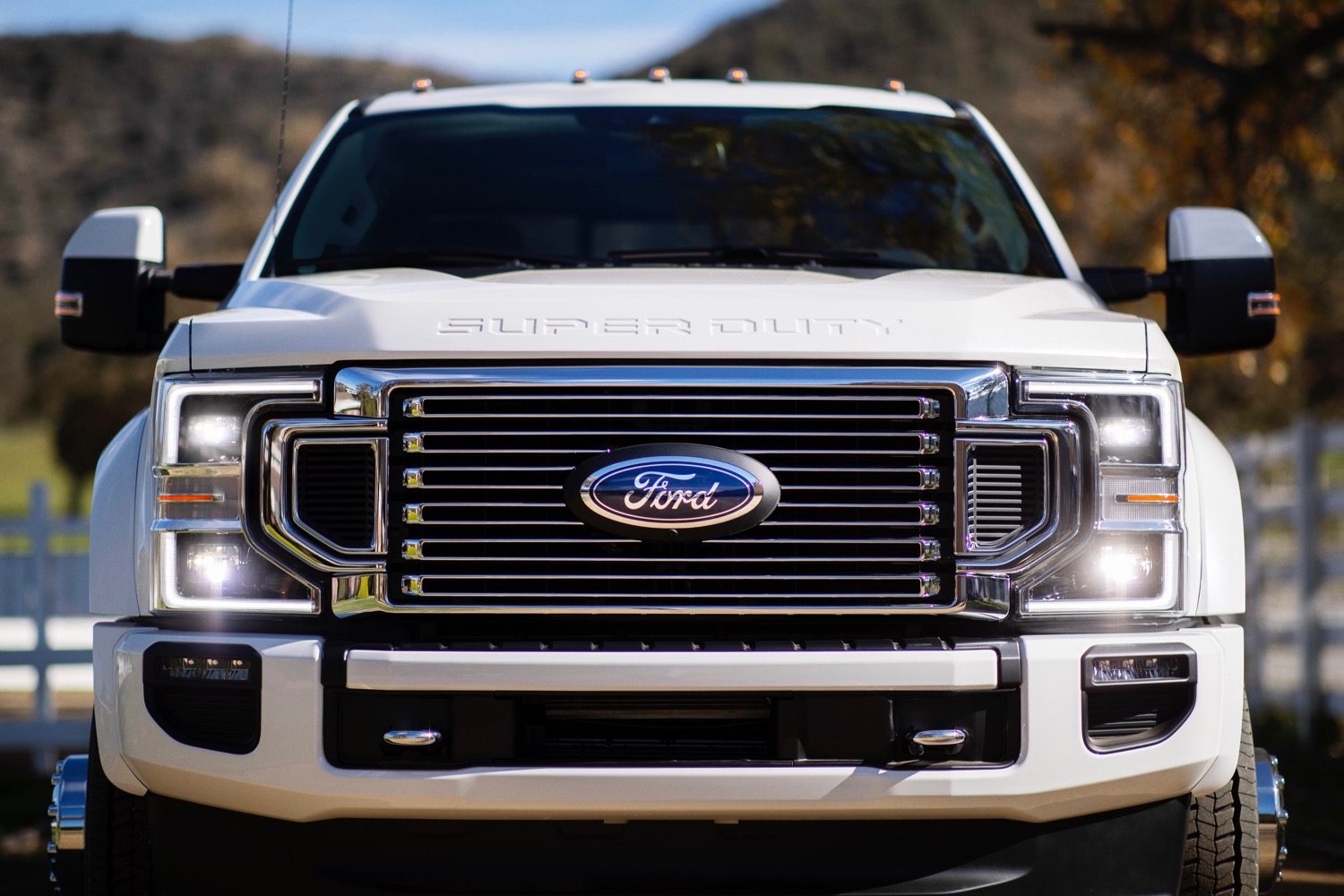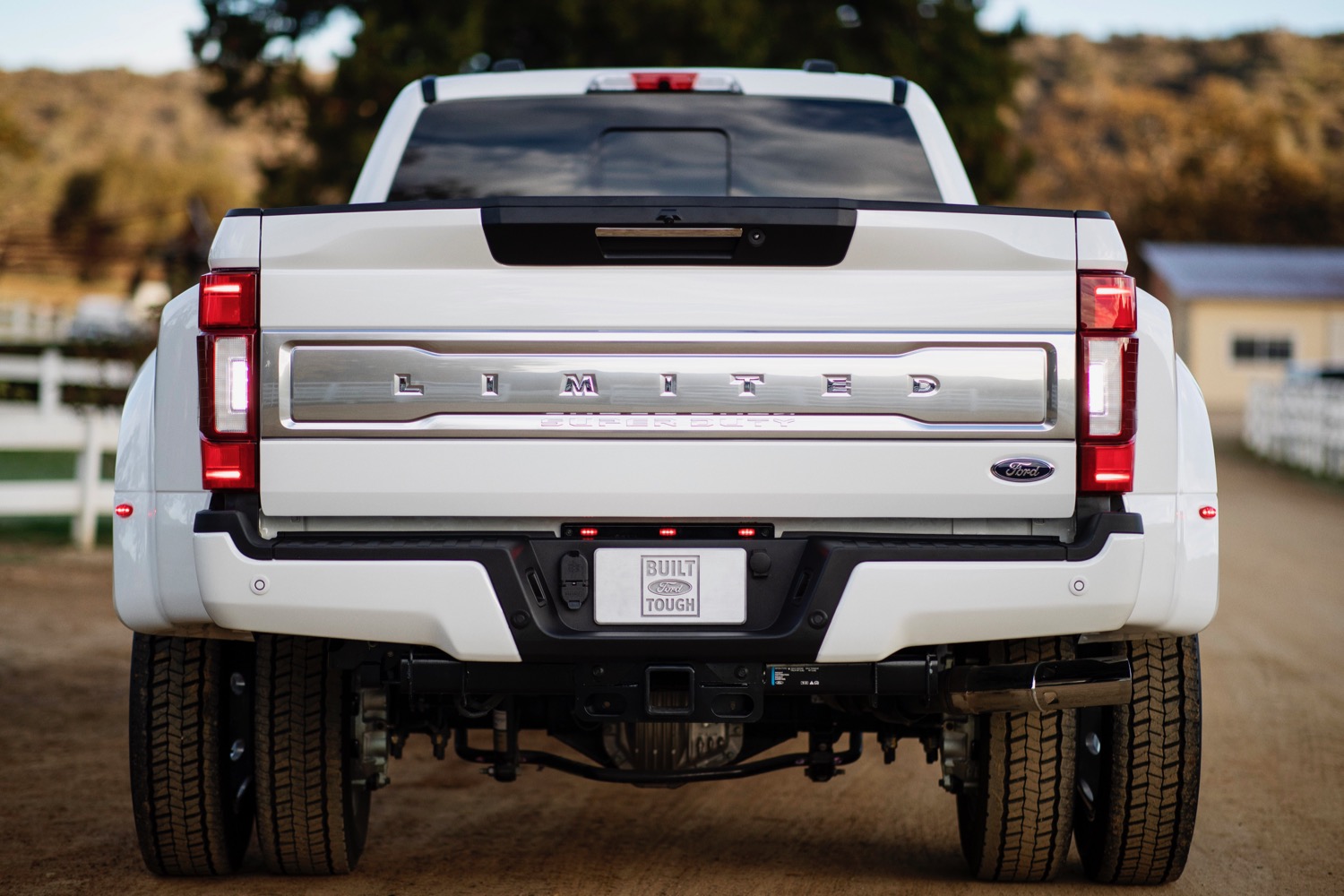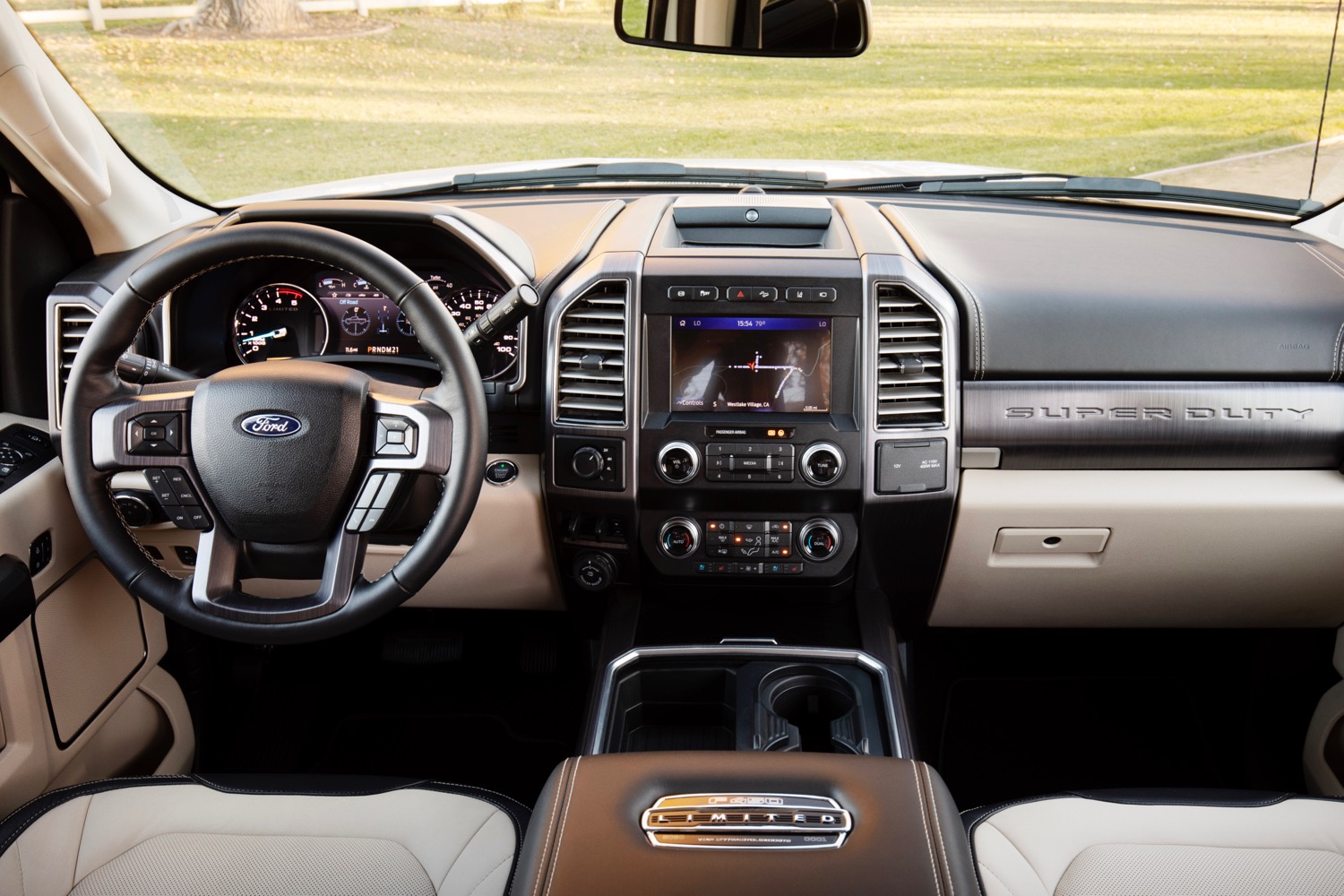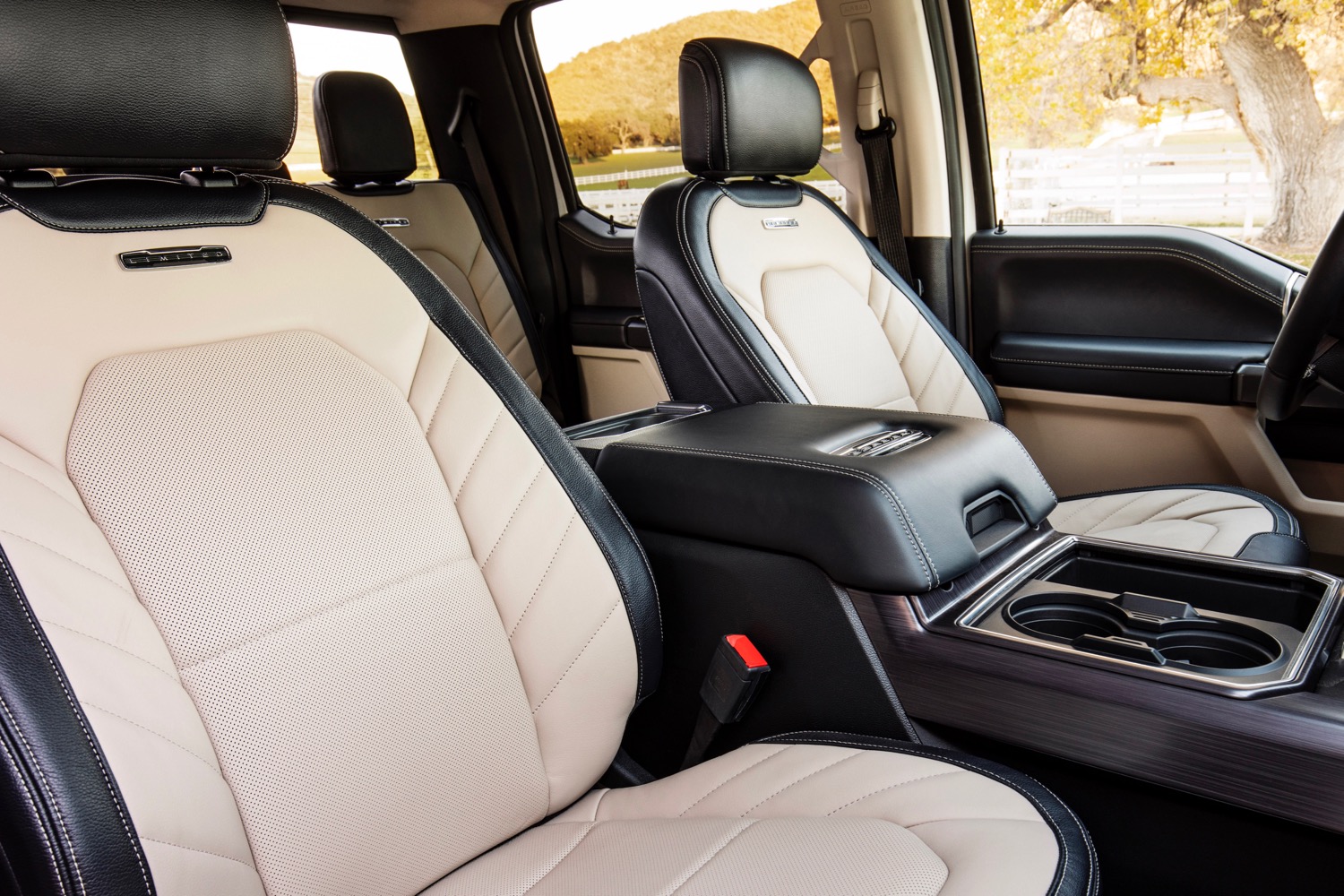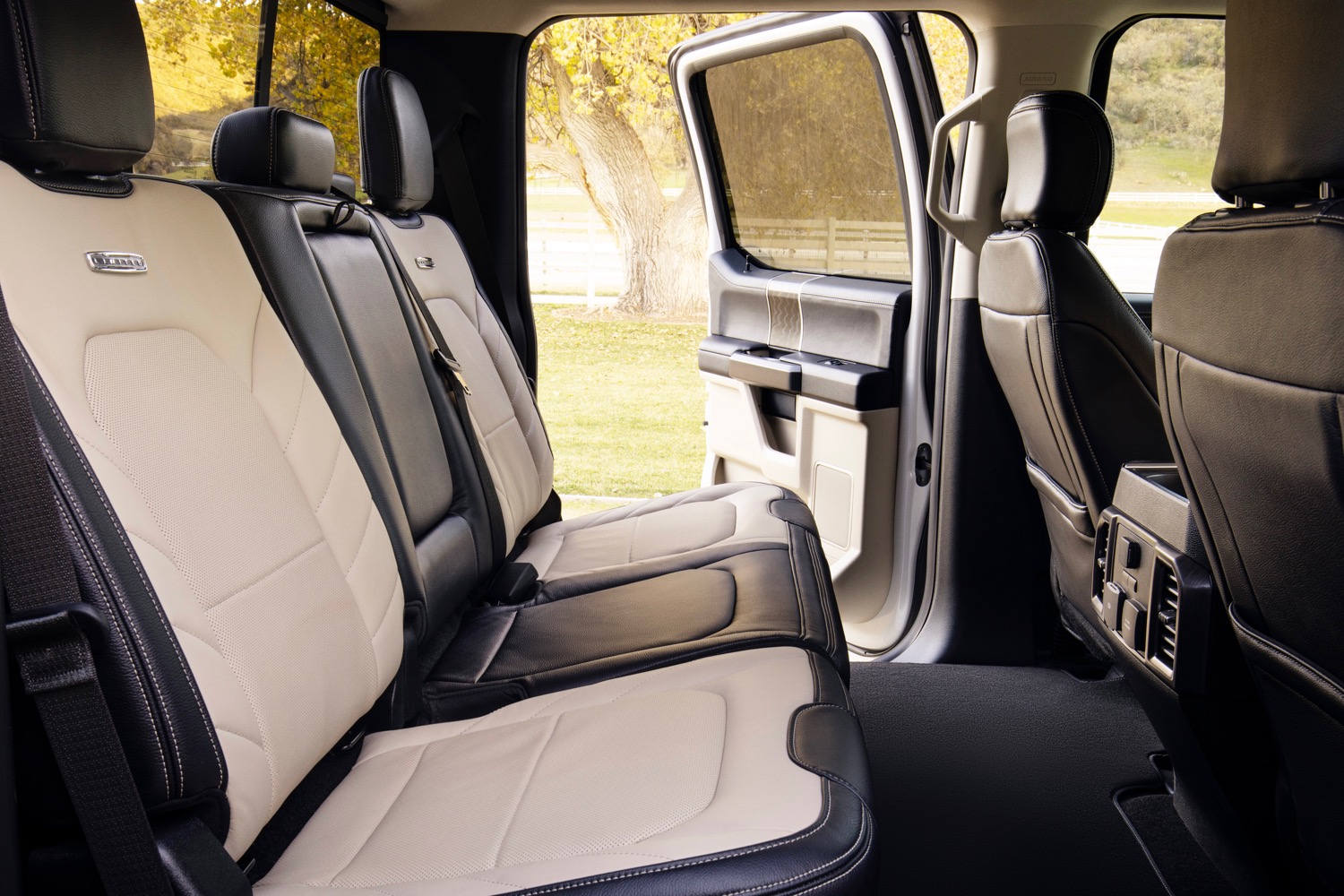The current-generation Ford Super Duty emphasized tech like no heavy-duty pickup truck before it, but nothing stands still. So Ford is giving the 2020 F-Series Super Duty even more tech features, as well as a monstrous new engine.
A 7.3-liter gasoline V8 joins the lineup, alongside carryover 6.2-liter gasoline and 6.7-liter diesel V8s. The diesel gets a bump in power, to 475 horsepower and 1,050 pound-feet of torque. That makes it the most powerful diesel Ford has ever offered in a pickup truck. Crucially, it also beats the 2019 Ram Heavy Duty, which was the first pickup to reach 1,000 lb-ft of torque. An extra 50 lb-ft may not seem like much, but it still earns Ford bragging rights. The 7.3-liter gasoline V8 makes 430 hp and 475 lb-ft, while the 6.2-liter gasoline V8 makes 385 hp and 430 lb-ft.
Those engines create serious pulling power. With the diesel, Ford claims the 2020 Super Duty can tow up to 37,000 pounds — more than the
The 7.3-liter gasoline V8 and 6.7-liter diesel are paired with a 10-speed automatic transmission, while the 6.2-liter gasoline engine gets a six-speed automatic. Ford calls the 10-speed “all-new,” indicating that it’s different from the gearbox used in the smaller F-150, which was co-developed with General Motors.
Ford also added the Pro Trailer Backup Assist system from the F-150 and Expedition. This lets the truck do most of the work of steering a trailer into a parking spot, with the driver making small adjustments with a dashboard knob. Ford said the system will work with all trailer styles, including the larger fifth wheel and gooseneck trailers the Super Duty is capable of hauling.
New driver aids include lane-keep assist, blind spot monitoring, and autonomous emergency braking with pedestrian detection. The 2020 Super Duty also gets a built-in 4G LTE Wi-Fi hot spot that can support up to 10 devices. USB-C ports and a wireless charging pad handle phone charging. The Sync 3 infotainment system with Apple CarPlay and Android Auto carries over from the previous model year.
Completing the list of updates are some subtle styling changes. The design of the headlights, taillights, and grille has been tweaked, and dual-rear-wheel models get a higher-airflow grille designed to aid cooling. The front bumper was also redesigned to improve cooling and make using utility hooks easier, according to Ford. The Super Duty also gets a Tremor off-road package for 2020.
The 2020 Ford F-Series Super Duty hits showrooms by the end of 2019. Pricing will be revealed closer to the on-sale date. While Ford is offering an updated version of an existing model, the rival Ram Heavy Duty and Chevrolet Silverado HD/GMC Sierra HD twins are fresh designs. But with its class-topping towing and payload figures, Ford is beating the new trucks where it counts. At least until General Motors and
Updated on September 26, 2019: Added horsepower, torque, payload, and towing figures. Updated on-sale timing.
Editors' Recommendations
- Ford is only making 2,000 of these matte black F-150 Lightnings. Here’s your first look
- Ford halts reservations for its all-electric F-150 Lightning pickup
- President Biden drives Ford F-150 Lightning electric-truck prototype
- 2021 Tesla Cybertruck vs. 2021 Ford F-150
- Ram 1500 TRX vs. Ford F-150 Raptor
